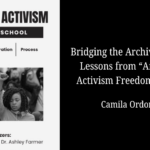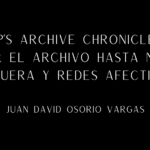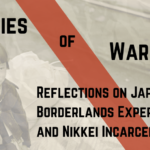
NEP’S Archive Chronicles explores the role archives play in historical research, offering insight into the process of conducting archival work and research. Each installment will offer a unique perspective on the treasures and challenges researchers encounter in archives around the world. NEP’s Archive Chronicles is intended to be both a practical guide and a space for reflection, showcasing contributors’ experiences with archival research. In this installment of NEP’s Archive Chronicles, “A Brief Guide Through Some Archives in Gaborone and Serowe, Botswana”, Gerardo Manrique de Lara Ruiz presents an overview of the main archives in Botswana where he has conducted research for his doctoral project.
Gaborone, the capital of Botswana, is a planned city. The Botswana National Archives and Records Services (BNARS) sits right in its center, next to the parliament buildings, the statue of Sir. Seretse Khama (the country’s first president), and the Main Mall (a strip of shops, restaurants, and banks.) The building is low-slung and beautifully decorated on the outside with metal sculptures. Its small size, central location, and function give it a special aura of tranquility and silence. In the middle of the day, when office workers leave the tall government buildings to eat their lunch, the archive’s small reading room keeps the researchers, students, and old men reading the paper safe from the commotion.
I have visited several archives in Botswana in past years as part of my pre-dissertation research on the practices and strategies of people under colonial rule. My research focuses on how people, from local rulers to marginalized communities, used new institutional frameworks like colonial courts and councils to advance political and economic claims. At first, I was looking for records that would speak to the relationships between politically active Batswana leaders and the colonial administration. As a foreigner, Botswana’s archives were initially a black box. Discovering access routes and figuring out the kinds of documents I needed became parge piece of the intellectual puzzle I was trying to solve. Slowly and with the help of many kind archivists, librarians, interns, and museum directors I have become more familiar with Botswana’s archival repositories.
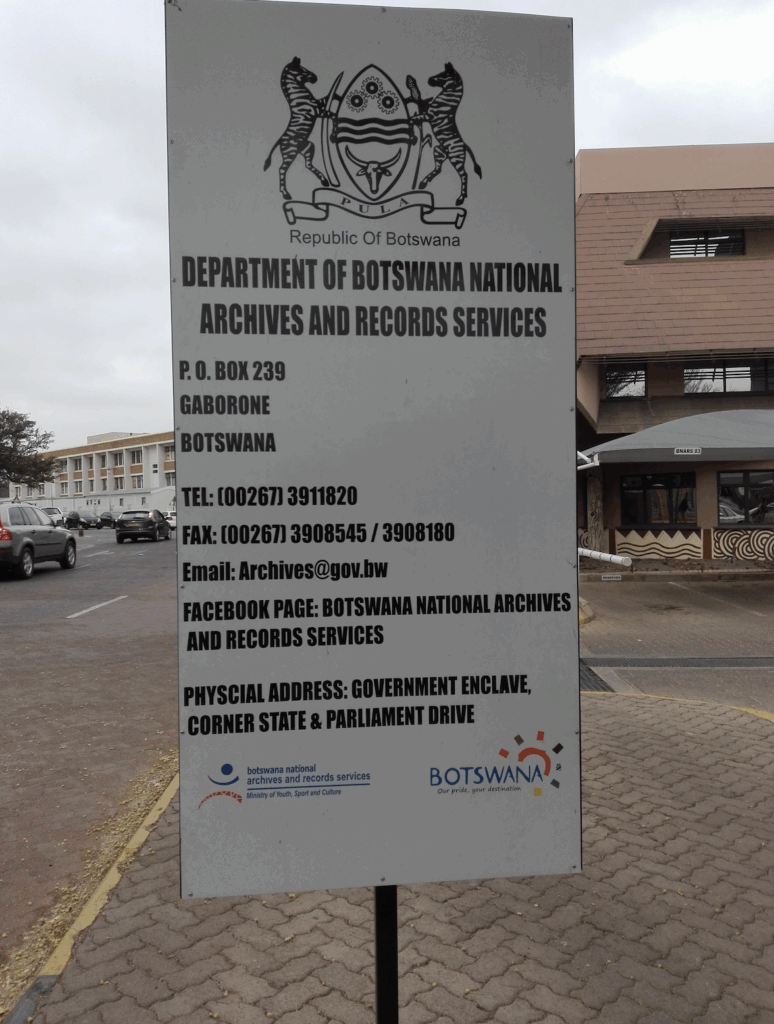
The main archival repository of Botswana is the BNARS. While the nucleus of the archive is made up of colonial administrative papers and post-independence government files, its collections have been enriched oral histories, photographs, and audiovisual materials. The archives also host multiple collections of personal papers, including some of the field notes of anthropologist Isaac Schapera. Active during the colonial period, Schapera wrote monographs on almost all aspects of life in colonial Botswana, from law and land tenure to marriage and sexuality. Like many scholars before me, I have relied on his notes not only for their detailed descriptions but also to interrogate how anthropologists have shaped our understanding of the past and were themselves influential historical actors.
The reading room at the BNARS, with its ample seating and large wooden tables, is never empty but almost always has available space. A few researchers are usually joined by lawyers, journalists, and members of the general public who go to the archive to read various books and newspapers. The archivists, assisted by interns from the University of Botswana, often lead groups of schoolchildren that come to learn about the history of Botswana, and how the archives work to preserve it. These tours explain why the archive’s walls are decorated with reproductions of photographs and large-print texts about some of Botswana’s most dramatic episodes. One such events, and the favorite of most children, was the journey of three Batswana dikgosi (“chiefs”) to London in 1895 to oppose Cecil Rhodes’ plans to place the territory under his British South Africa Company. After hours of looking at nineteenth-century cursive written with thin pencil, the groups of children waving through the glass are a welcome distraction.
The capital city has other archives. The University of Botswana (UB) archives are located in the library basement. The university keeps a vast collection of theses on various subjects written by its students. Many of them have not been published in any form and are an indispensable resource for anyone interested in the history of Botswana. The UB archives also host multiple collections of personal papers. I have mostly consulted the papers of Tshekedi Khama, who was regent of the Bamangwato (one of the most important communities in Botswana) during the early 20th century. During his regency, he often took a combative attitude towards the administration and repeatedly denounced the colonial government. Famously, he also defended the right of African leaders to pass judgment and punish Europeans who lived within their communities.[1] His papers provide a crucial insight into the history of Botswana during the colonial period. Yet, the collection is not limited to the regent’s papers. It also contains documents from multiple members of the Khama family, which produced many of the country’s key colonial and postcolonial politicians, including it’s first and fourth presidents. The Tshekedi Khama papers contain not only administrative records, court cases, and official memoranda, but also correspondence between the members of the family. Personal objects, like music records and photographs, provide a window into the domestic realm of this influential family.

However, the records of the Khama family are distributed in multiple repositories. North of Gaborone, in Serowe, the Khama III Memorial Museum has part of the regent’s papers.[2] Here the collections include local administrative records and correspondence, including letters sent to international organizations. Encountering this epistolary archive has reshaped my research. The letters between Tshekedi Khama and Douglas Buchanan, his lawyer, show the praxis of early anticolonial strategies, but also the emergence and transformation of a life-long friendship. Not all the letters in the collection, however, are directly related to the family. The museum, for instance, keeps the letters that Batswana soldiers wrote to their families back home during World War II. This epistolary record speaks not to high politics but to the domestic sphere and the personal experiences of everyday people.
The archive also houses the papers of Bessie Head, one of southern Africa’s most distinguished female writers. The museum has papers, manuscripts, and belongings of the author of When Rain Clouds Gather and Serowe: Village of the Rain-Wind. The Khama III Memorial Museum displays many personal items that belonged to the Khama family and Bessie Head, including a reconstruction of the author’s room. It is an ideal place to work. The archivists have a profound sense of responsibility for local history and pride in their collections. My conversations with them have been equally instructive and inspiring.
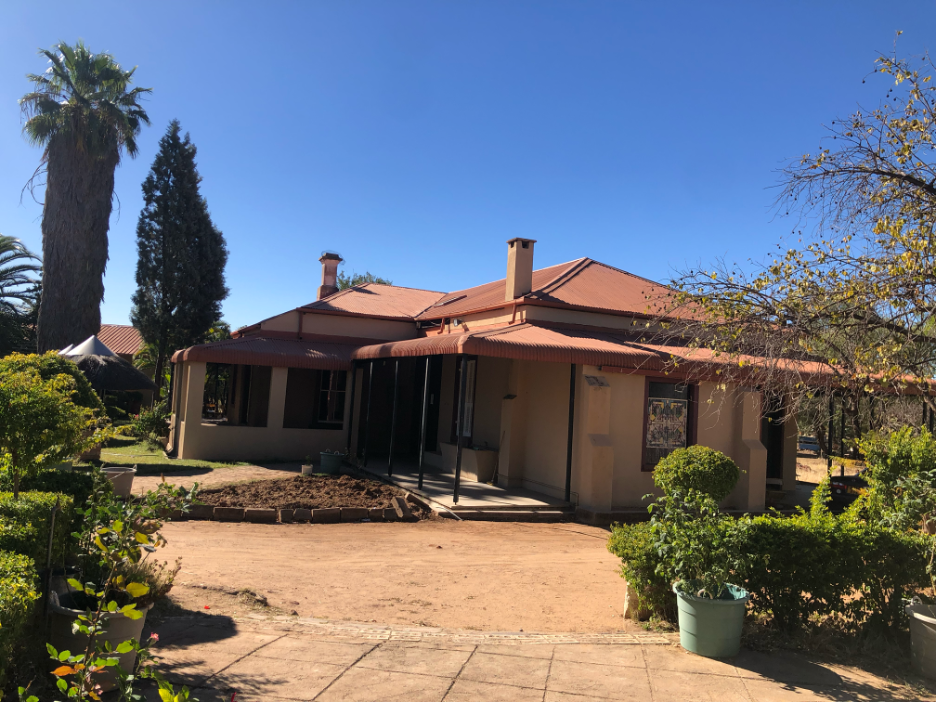
Serowe is the capital of the Bamangwato and, during the early 20th century, was one of the largest settlements in Africa south of the equator. Gaborone and Serowe, two very different urban areas, have occupied a central position in the history of Botswana at different times. Bessie Head remarked in the 1980s that “Serowe is a historic village but not spectacularly so.”[3] The author meditated on its (relatively) recent foundation, its dynamism, and its willingness to change. For Head, Serowe was the opposite of a planned city since its construction “intimately involved its population.”[4] The monuments were few, and “a visitor might stare at them blankly, unaware of the drama and high purpose behind those silent stones.”[5] The museum and its archive, which now tells Head’s own story in Serowe, stands against the silence of the stones. It is insistently trying to make the visitor aware of the drama.
In a way, the differences between Gaborone and Serowe are translated into their respective archival repositories. In Serowe, the archives I consulted did not reflect the practices of colonial bureaucracy like in Gaborone, but a more spontaneous record-keeping that obeyed the needs of the community and of specific individuals, like Tshekedi Khama. Consequently, the BNARS and the Khama III Memorial Museum provide contrasting and complementing vantage points into the early 20th century. Even when describing the same actors and processes, local archives, like the Khama III Memorial Museum, capture a different register than their national and imperial counterparts. Being attuned to the logic behind the production of archival repositories can help us recreate a more complex, and hopefully better, picture of the colonial past.
Gerardo Manrique de Lara Ruiz a third-year PhD student of African History at Emory University. His research centers on the politics of colonial rule in the High Commission Territories of Southern Africa, specifically Botswana and Lesotho. His research examines how multiple actors understood and defended diverse notions of sovereignty, representation, and customary law. It also interrogates how these ideas informed and were themselves affected by local conflicts over political control and the distribution of scarce resources, like land and water.
The views and opinions expressed in this article or video are those of the individual author(s) or presenter(s) and do not necessarily reflect the policy or views of the editors at Not Even Past, the UT Department of History, the University of Texas at Austin, or the UT System Board of Regents. Not Even Past is an online public history magazine rather than a peer-reviewed academic journal. While we make efforts to ensure that factual information in articles was obtained from reliable sources, Not Even Past is not responsible for any errors or omissions.
[1] For more on the life of Tshekedi Khama and this particular case, see Michael Crowder, The Flogging of Phinehas McIntosh: a Tale of Colonial Folly and Injustice: Bechuanaland 1933 (New Haven: Yale University Press, 1988).
[2] Some records related to the family are not in Botswana but in the United Kingdom.
[3] Bessie Head, Serowe: Village of the Rain Wind (Portsmouth, NH: Heinemann, 1981), xii.
[4] Head, Serowe, xii.
[5] Head, Serowe, xii.

